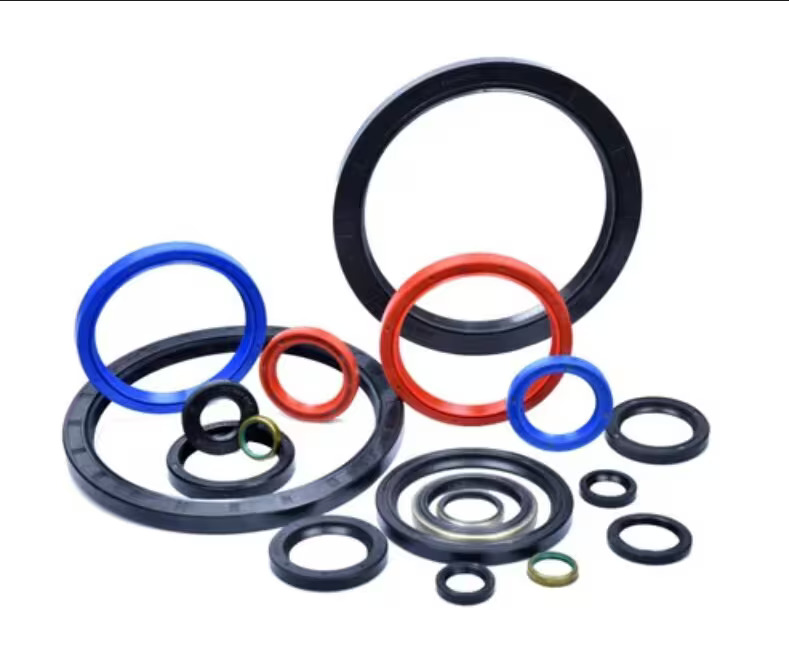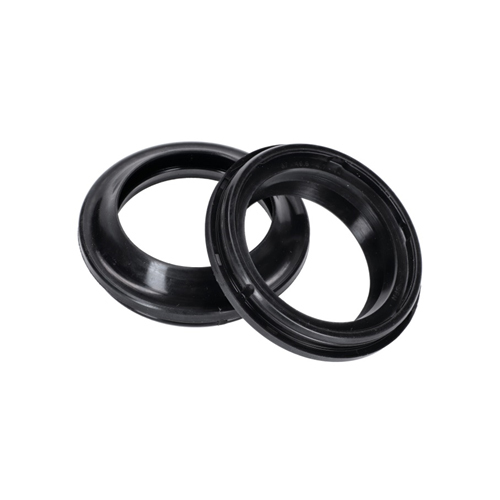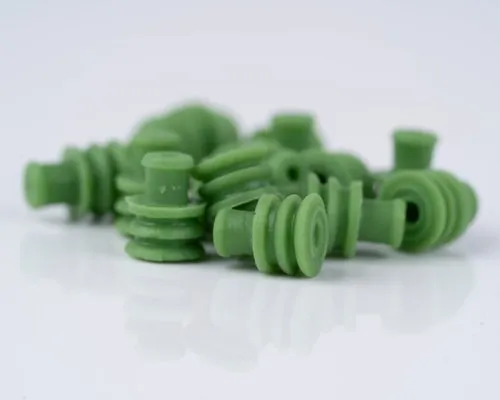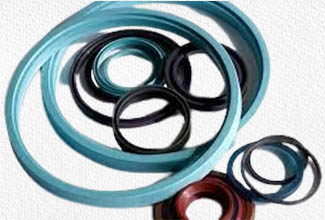
Oil Seal
Rubber oil seals are precision-engineered components featuring a flexible elastomer lip bonded to a rigid metal case and reinforced with a garter spring, designed to prevent lubricant leaks, block contaminants, and perform reliably across varying shaft diameters, temperatures (−40 °C to +230 °C), and applications in automotive and industrial equipment
Key Features:
-
Main & Minor Lips — Dual-lip design: the main lip ensures a tight seal on the rotating shaft, while the minor lip keeps out dust and contaminants
-
Garter Spring — A compression spring behind the main lip maintains consistent radial force, compensating for wear and temperature changes
-
Hydrodynamic Sealing Edge — Wedge-shaped lips generate a fluid film that enhances dynamic sealing, reduces friction, and pumps lubricant inward
-
Low Heat & Long Life — Self-lubricating rubber reduces heat generation, contributing to greater durability and service life
Dust/Water Seal
Our NBR Dust/Water Shaft Seal is a versatile molded rubber solution (–20 °C to +120 °C) designed for hydraulics and mechanical systems. Crafted from nitrile (NBR) with optional FKM or silicone compounds, 70–75 Shore A hardness, it prevents ingress of dust and water, supports standard/custom sizes, and ensures reliable sealing.
Key Features:
-
Premium Material (NBR): Excellent resistance to oils, fuels, hydraulic fluids, and water, suitable for -40 °C to +120 °C operation
-
Effective Contaminant Exclusion: Designed as a V‑ring or lip seal to prevent ingress of dust, dirt, water splash, and retain internal grease
-
Low Friction & Energy Savings: Seal lip rotates with the shaft; friction decreases with speed due to centripetal force — ensuring efficient performance
-
Flexible & Easy Installation: All-rubber construction allows stretch-fit installation over shafts and components with minimal disassembly
-
Wear & Tear Durable: High abrasion resistance, dimensional accuracy, and ability to function under heavy usage conditions .


Gum Seal
A natural gum rubber component delivering exceptional flexibility and resilience, with tensile strength up to ~3,000 psi, elongation around 550–600%, and excellent abrasion resistance; ideal for cushioning, vibration damping, gasketing, and sealing applications, operating reliably from –40 °F to ~140 °F while resisting acids, alkalis, and salts
Key Features:
-
Exceptional flexibility & elongation (up to ~550%) — adapts smoothly to irregular surfaces
-
Low compression set & strong resilience — maintains shape under repeated stress
-
Effective vibration & shock damping — ideal for cushioning applications
-
Resistance to acids, alkalis & organic salts, though susceptible to oils, solvents, UV, and ozone
-
Temperature performance from approximately –40 °F up to +140 °F
Pneumatic Seals
Pneumatic seals, crafted from materials like NBR, FKM, PTFE, and polyurethane, ensure airtight performance in pneumatic cylinders, valves, and actuators by preventing air leakage, minimizing friction, and resisting wear/temperature. They come in rod, piston, scraper, wiper, and cushioning designs—ideal for high-speed, low-pressure systems.
Key Features:
-
Easy Installation – Available in standard profiles for quick fit and maintenance
-
Pressure Resistance – Maintain reliable sealing in typical pneumatic pressures (up to ~16 bar; peaks possible)
-
Leak Prevention – Provide airtight sealing for cylinders, valves, actuators, and dynamic elements
-
Flexibility – Accommodate axial and radial movement while maintaining seal integrity
